KT Solar 150w Portable Solar Blanket
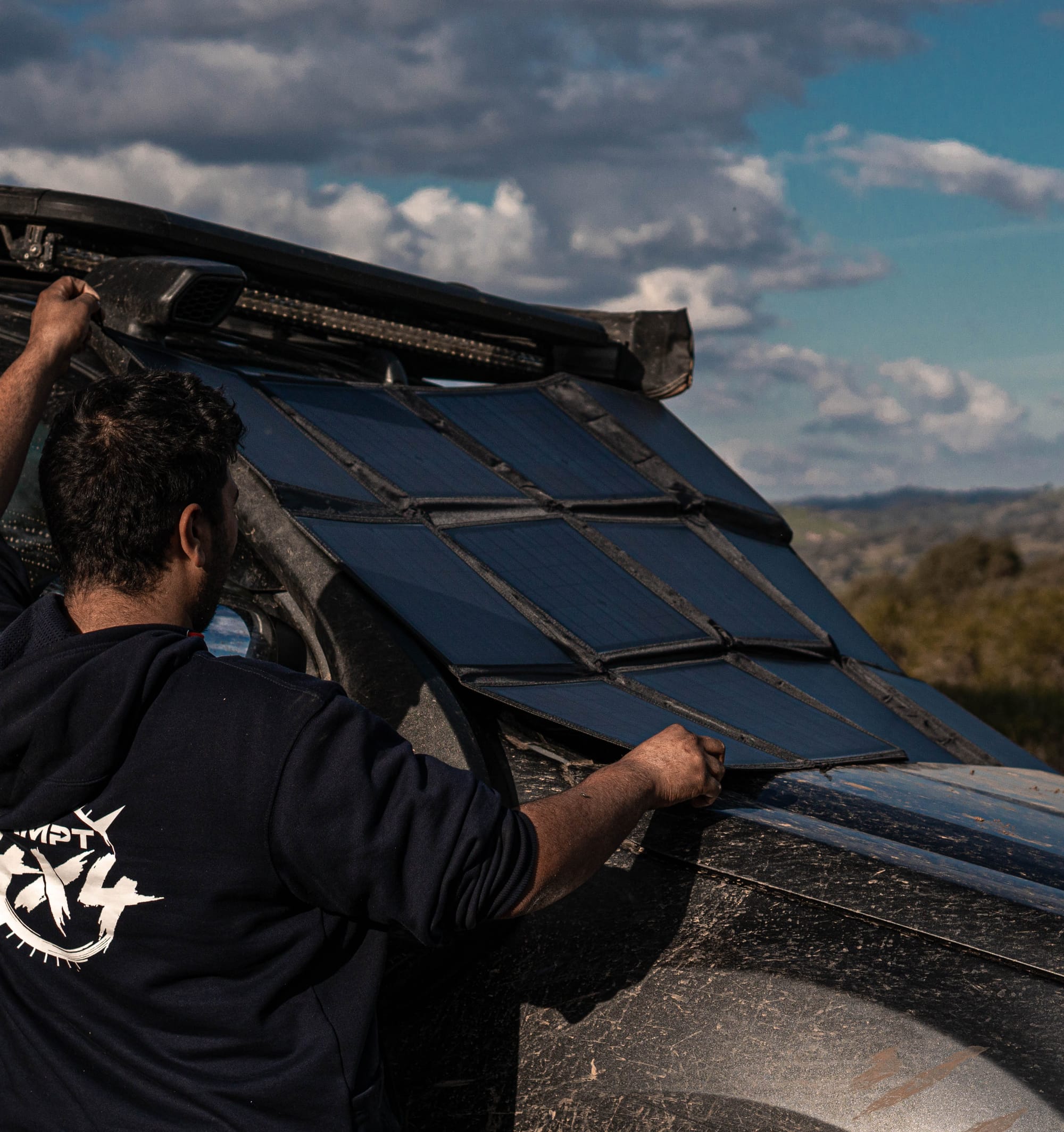
Australia, the sunniest place on earth? If you look at the bright red spots on the map below showing how much solar radiation is absorbed by the earth, you will find parts of the pacific, mid-Atlantic and Australia receive more solar radiation than California and even the Mediterranean. This does not necessarily indicate blue skies and sunny days year-round although solar radiation can be high on a cloudy day, it does however tell us Australia is a good place to produce solar energy. Strong solar radiation also means extreme weather, record drought for the better part of a decade and consistent bushfires. But let’s just focus on the advantage of Australia’s position on the solar radiation map.
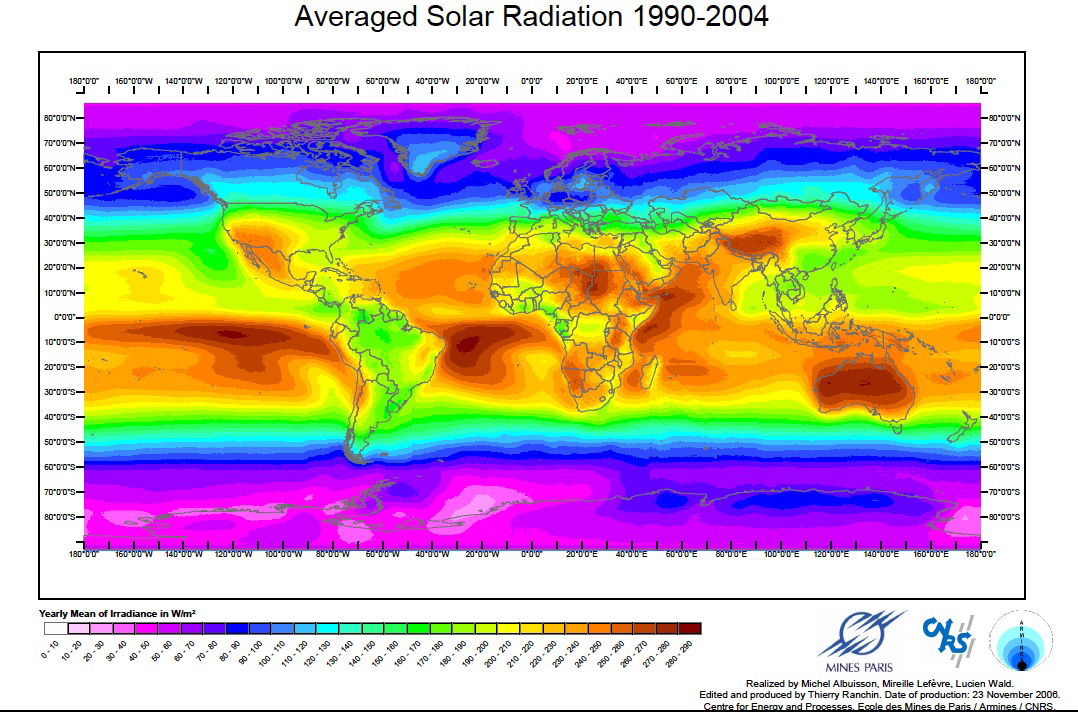
Solar Radiation, Theirry Ranchin 2006.
As adventure enthusiasts and those who rely on off-the-grid power, we can use the sun to our advantage to produce usable electricity from a solar panel. If you haven’t already seen, solar blankets are slowly moving into the list for every four-wheel driver. They’re light weight, compact nature means unlike a fixed panel you can save valuable roof space and store them with ease.
Over the last few months, we’ve had the pleasure of using a 150w portable solar blanket from KT Solar. Unboxing the solar blanket, we found it folded into a compact bag with all accessories neatly tucked away inside, making it easy for transportation and storage. Inside the bag you’ll find a 12v solar regulator, a 5m 50a Anderson to Anderson extension lead and a 50a Anderson to alligator clips. The solar blanket itself is IP67 rated, coated in a scratch-resistant coating for durability and has folded tabs/eyelets which allow you to secure the blanket to your vehicle and close the doors over to reduce the chances of theft.
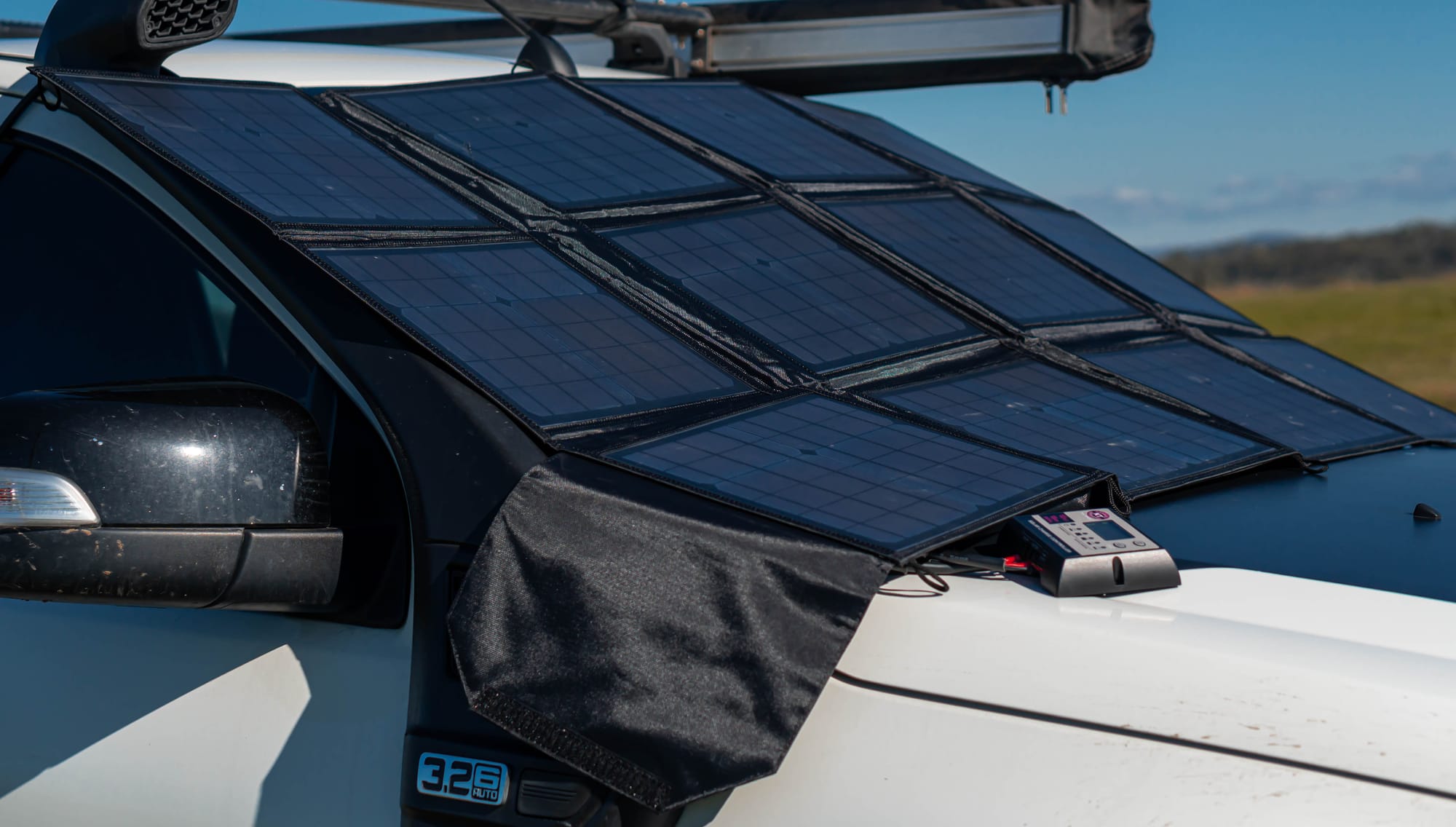
When looking for a solar panel, it’s important to work out what panel is best suited for your needs. To start, we need to calculate what devices we use draw. For example, our Waeco CFX65 ran at 4.4amps at -8 degrees with the lid open to demonstrate a worst-case scenario. To calculate the wattage: (Amps) 4.4amps multiplied by (voltage) 12V equals (Wattage) 53w in direct sunlight. A 150w solar panel will be more than enough to cover the required load but in saying that, remember solar panels out of the box aren’t engineered to 100% efficiency, and there is considerable variation in the quality of solar panels. Shaded by clouds, trees and the direction of the sun during the day will all affect the variability of output from the panel. What is interesting to note however, is how efficient we found the KT Solar 150w solar blanket compared to other brands we have used in the past, even in overcast conditions. Something to consider when purchasing a solar panel or blanket. Quality matters.
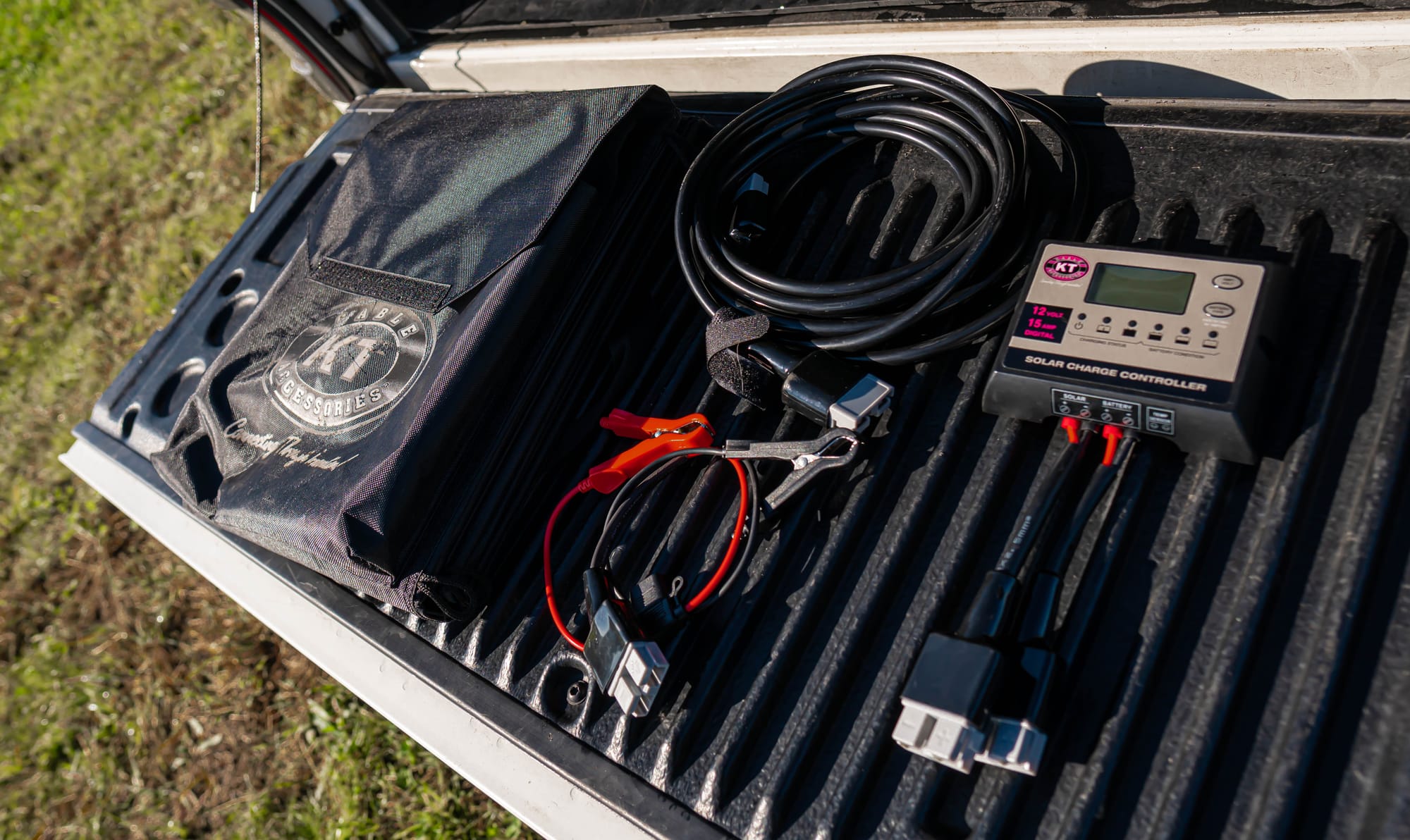
There are two main types of solar panels monocrystalline and amorphous. Monocrystalline solar panels like this KT cables unit are made from silicon but are set in a lattice structure which allows for a more higher efficiency solar panel. At around 15% efficiency, the only drawback with these types of panels is the need to be perpendicular with the sun to get to most efficient performance. Higher temperatures cause a loss of 12-15% efficiency.
Amorphous solar panels are new to the game and are built to a wider spectrum of light, allowing greater efficiency in lower light conditions. The key benefit is they can be manufactured onto different surfaces allowing for flexibility. These types of solar panels have an average efficiency of 6%, are much lighter and can fold up to almost unbelievable sizes. Unlike monocrystalline panels amorphous cells can withstand higher temperatures without output being affected compared to crystalline cells.
If you were to connect a solar panel (unregulated) directly to your battery on a sunny day, it is possible for the panel to generate well over the required 13.6V required for it to charge. This will completely destroy the battery internals of any battery. For solar panels to work safely and effectively, it requires a regulator to limit output to a safe tolerance required by the battery. The KT Solar 150w portable solar blanket comes with a digital solar regulator which will regulate the voltage to a safe level according to your pre-selected battery type. It is capable of charging lithium, AGM/gel, calcium and wet/lead acid batteries. The two main varieties of regulators available are known as Pulse Width Modulation (PWM) or Maximum Power Point Tracking (MPPT). MPPT regulators are more expensive, but they offer a few key advantages, such as preventing reverse current flow at night and more efficient regulation.
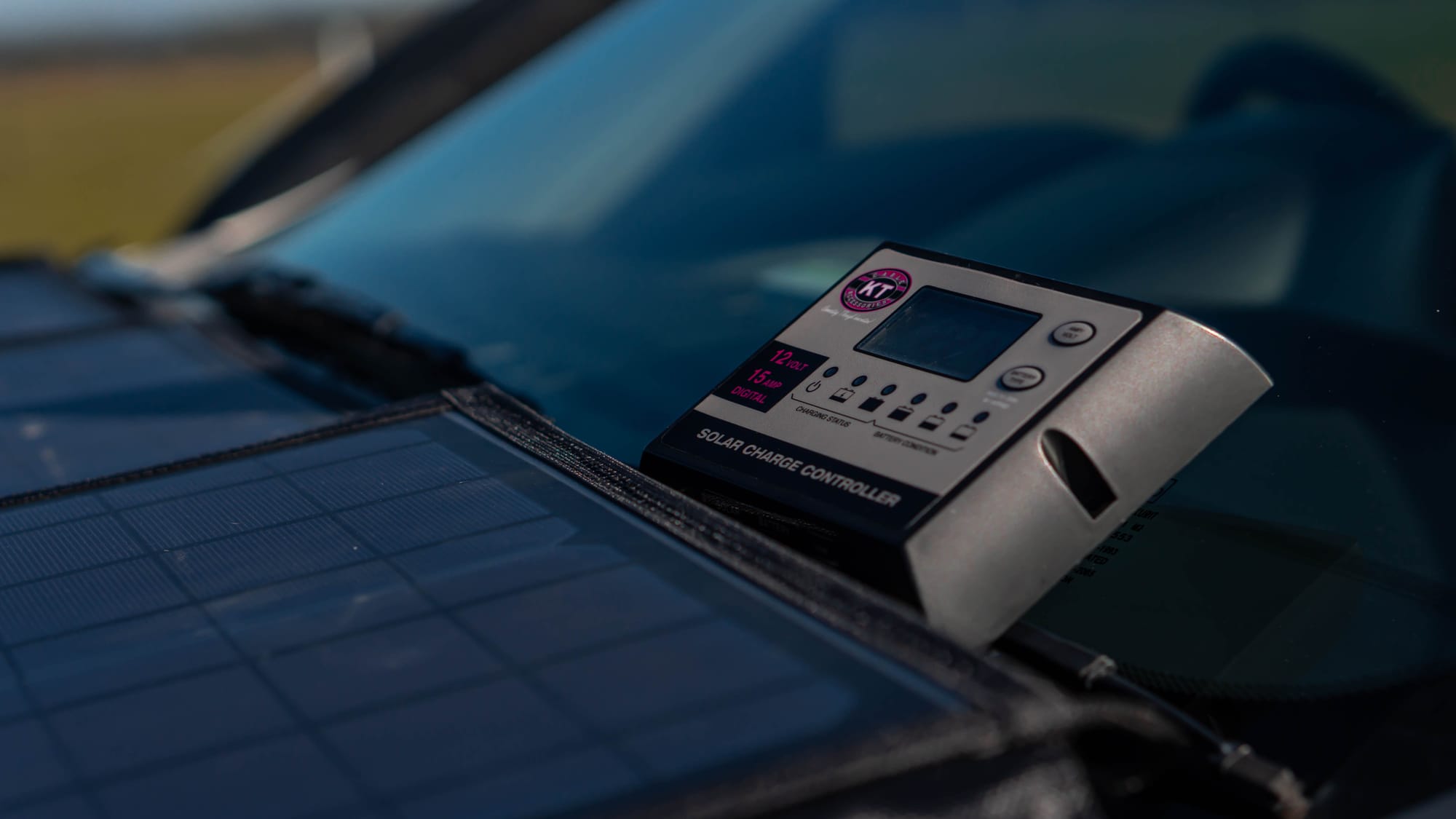
Our experience with the KT Solar 150W portable solar blanket has been fantastic. We have seen greater power efficiency compared to other brands and the build quality is second to none. For a quality, reasonably priced unit compared to others on the market, 2-year warranty and local Australian support. It’s hard to find a better product that ticks the boxes.
For more information: https://ktcables.com.au/2018/09/20/249302/


